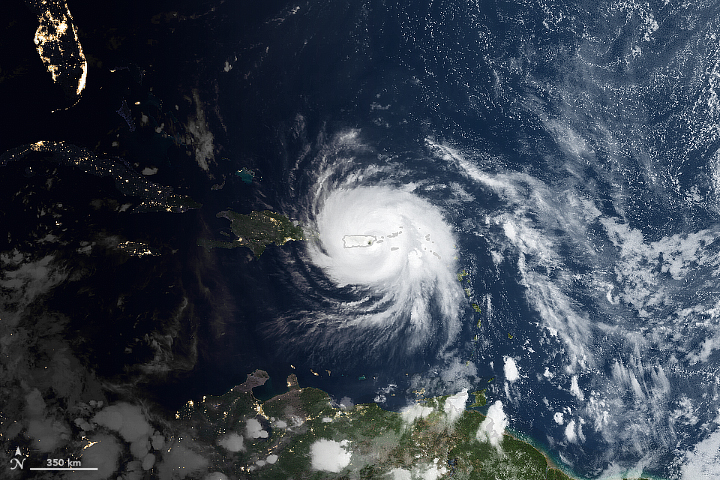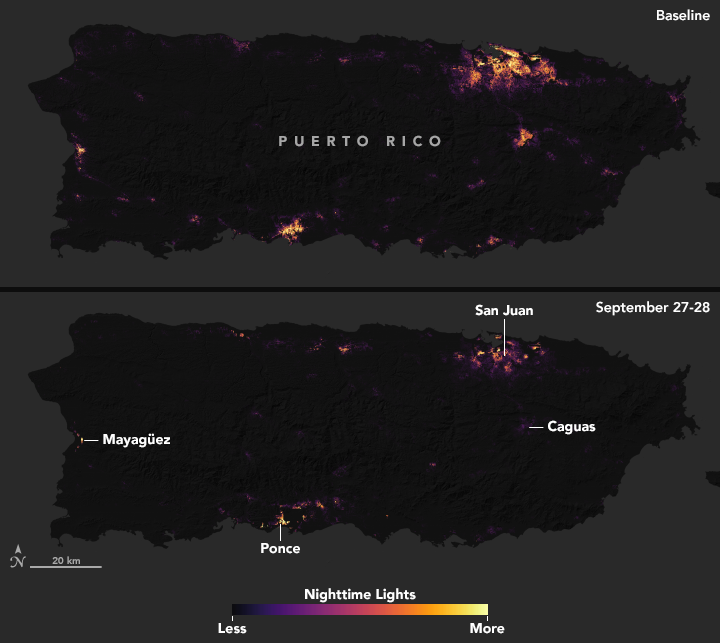Archive for the ‘Tropical cyclones’ Category
4/29/1991: A devastating cyclone hits Bangladesh, killing more than 135,000 people.
Sunday, April 29th, 2018A family on their return to Puerto Rico
Monday, April 2nd, 2018“….It is too early to determine how many may return, but there is little doubt that Puerto Ricans have begun trickling back to the island.
For many, it is a joyous return to the motherland after months in exile. But the homecoming is still bittersweet. Those returning must come to terms with an island that is still crippled, where power outages are frequent, businesses remain shuttered and hillsides are pocked with blue roof tarps.
Older people like Enrique and Emma are especially vulnerable to this instability…..”
Disaster Relief for Puerto Rico; Is it enough?
Friday, February 9th, 2018“….Puerto Rico, along with the United States Virgin Islands, certainly has reason to cheer: The deal includes $4.8 billion to replenish dwindling Medicaid funds, $2 billion to restore the shredded power grid and $9 billion for housing and urban development projects.

But the funding falls tens of billions of dollars short of what Puerto Rico says it needs to come back from the devastating storm…..”

Puerto Rico: More than 1.5 million people on the island are still in the dark.
Saturday, December 30th, 2017“….Much of the island’s 2,400 miles off transmission lines, 30,000 miles of distribution lines and 342 substations were damaged in the storm….”
acquired September 27 – 28, 2017

After Hurricane Maria tore across Puerto Rico, it quickly became clear that the destruction would pose daunting challenges for first responders. Most of the electric power grid and telecommunications network was knocked offline. Flooding, downed trees, and toppled power lines made many roads impassable.
In circumstances like this, quickly knowing where the power is out—and how long it has been out—allows first responders to better deploy rescue and repair crews and to distribute life-saving supplies. And that is exactly why teams of scientists at NASA are working long days to make sure that groups like the National Guard and the Federal Emergency Management Agency (FEMA) get high-quality satellite maps of power outages in Puerto Rico.
These before-and-after images of Puerto Rico’s nighttime lights are based on data captured by the Suomi NPP satellite. The data was acquired by the Visible Infrared Imaging Radiometer Suite (VIIRS) “day-night band,” which detects light in a range of wavelengths from green to near-infrared, including reflected moonlight, light from fires and oil wells, lightning, and emissions from cities or other human activity.
The images above show lighting around San Juan, capital of the commonwealth; the images below show the entire island. One image in each pair shows a typical night before Maria made landfall, based upon cloud-free and low moonlight conditions; the second image is a composite that shows light detected by VIIRS on the nights of September 27 and 28, 2017. By compositing two nights, the image has fewer clouds blocking the view. (Note: some clouds still blocked light emissions during the two nights, especially across southeastern and western Puerto Rico.) The images above show widespread outages around San Juan, including key hospital and transportation infrastructure.

Puerto Rico: The Comfort’s mission has ended, but was it adequately used during a time of desperate medical need?
Tuesday, December 12th, 2017- The ship was prepared to support 250 hospital beds
- Over its 53-day deployment, which included travel to and from the island, it admitted an average of only six patients a day, or 290 in total.
- An additional 1,625 people were treated aboard the ship as outpatients, all at no cost.
After the hurricanes: Inside a Senior Complex in Puerto Rico
Monday, December 11th, 2017“…..With large areas of Puerto Rico still in the dark three months after the first of the storms — according to government reports, only 60.4 percent of the pre-storm power grid load has been restored — older residents and those with chronic medical conditions are suffering in even more ways than their neighbors. Many nursing homes have no power. The failure to re-establish functioning telephone networks and transportation systems in many areas makes it difficult to get regular medical care. Fire safety systems are inoperable, posing special dangers for those who cannot easily escape.….”
Puerto Rico: Official Death Toll: 62. Actual Deaths May Be 1,052.
Saturday, December 9th, 2017“…..The Times’s analysis found that in the 42 days after Hurricane Maria made landfall on Sept. 20 as a Category 4 storm, 1,052 more people than usual died across the island. The analysis compared the number of deaths for each day in 2017 with the average of the number of deaths for the same days in 2015 and 2016.…..”

